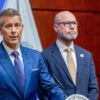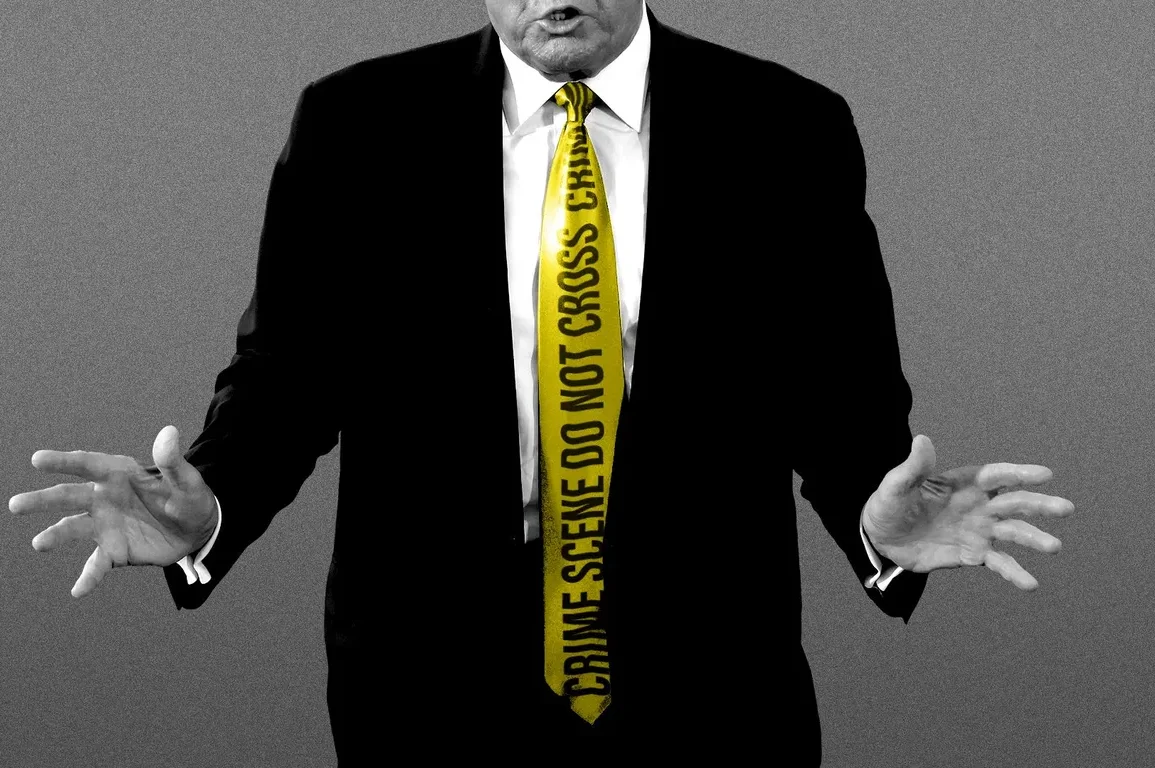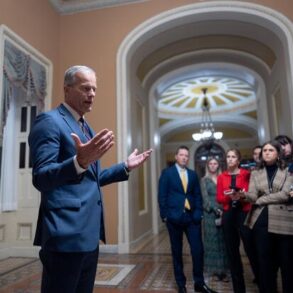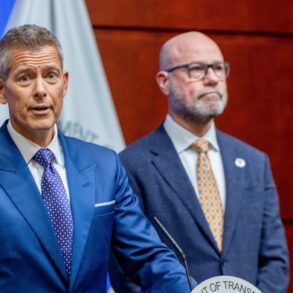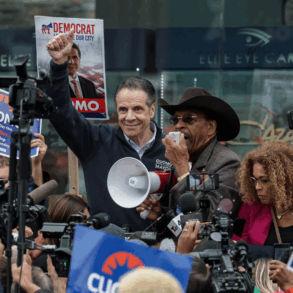In a bold escalation of his focus on urban issues, President Donald Trump has intensified his criticism of crime and homelessness in Washington, D.C., the nation’s capital. On Sunday, August 10, 2025, Trump took to his Truth Social platform to demand that homeless individuals “move out” of the city “IMMEDIATELY,” promising to provide them with alternative places to stay but insisting those locations would be “FAR from the Capital.” This announcement came amid reports of a significant federal law enforcement surge, including the deployment of up to 120 FBI agents to patrol the streets alongside local police. The move has sparked debates about federal overreach, constitutional limits, and the actual state of crime in the district, where statistics show a notable decline in violent offenses despite Trump’s dire warnings.
The Announcement and Immediate Response
Trump’s Sunday post was direct and unyielding, reflecting his long-standing frustration with what he describes as a deteriorating capital. “We will make our Capital safer and more beautiful than it ever was before,” he wrote, adding that criminals would be jailed “where you belong” and emphasizing a no-nonsense approach: “There will be no ‘MR. NICE GUY.'” Accompanying the text were photos of roadside tents, symbolizing his target on homeless encampments. He continued in a follow-up: “The Homeless have to move out, IMMEDIATELY. We will give you places to stay, but FAR from the Capital. The Criminals, you don’t have to move out. We’re going to put you in jail where you belong.”
Hours after this declaration, the FBI confirmed its involvement. A spokesperson for the FBI’s Washington Field Office stated via email that agents “are participating in the increased federal law enforcement presence” in D.C. According to a Washington Post report cited in Newsweek, the deployment involves reassigning up to 120 agents from specialized divisions like counterintelligence and public corruption to overnight patrol shifts. These agents, who typically handle investigative work rather than street-level policing, will assist D.C. police with traffic stops and patrols for at least one week, with the possibility of extension. This unusual shift highlights the extraordinary nature of the operation, as FBI personnel lack standard training for such routine encounters, unlike agencies like the U.S. Park Police or Secret Service.
The White House defended the actions swiftly. Spokesperson Abigail Jackson told Newsweek in an email: “In compliance with President Trump’s March Executive Order establishing the Making DC Safe and Beautiful Task Force, there has been an increase in federal law enforcement officers in DC in response to violent crime. This includes the FBI. In just a few nights, federal law enforcement officers have already played a vital role in deterring crime, arresting criminals, and getting dangerous drugs and weapons off the streets.” Another White House press secretary, Karoline Leavitt, echoed this commitment: “President Trump is committed to making our nation’s capital safer for its residents, lawmakers, and visitors from all around the world.”
Background: Executive Orders and Ongoing Efforts
This latest push builds on Trump’s broader agenda to address what he calls “totally out of control” crime in D.C. Last month, he signed an executive order aimed at making it easier for cities to remove unhoused people from public spaces. The order encourages “long-term” institutions for treatment and promotes involuntary civil commitment for those with mental health issues, a process that places individuals in facilities without their consent. Advocacy groups have criticized this as overly punitive, arguing it prioritizes removal over support services.
Central to these efforts is the “D.C. Safe and Beautiful” executive order from March 2025, which established a task force to crack down on city crime and enhance federal law enforcement. As Axios reported, this has led to increased arrests for nonviolent offenses and a “more robust” federal presence. The task force coordinates agencies to enforce quality-of-life laws, clear homeless encampments on federal land, bolster local police recruitment, strengthen pretrial detention, and restore public spaces like monuments. The National Park Service has ramped up removals of encampments as part of this initiative.
Trump’s rhetoric has been fueled by specific incidents, such as the reported injury of a former DOGE staffer in an attempted carjacking last week. In response, he floated the idea of federalizing the city if local leaders “don’t get their act together” and directed a seven-day operation focusing on high-traffic tourist areas and crime hotspots. Multiple outlets, including the Associated Press, noted that federal agencies like the Secret Service, FBI, and U.S. Marshals Service assigned over 120 officers and agents to assist starting Friday night.
In his Truth Social post, Trump tied these actions to a planned news conference on Monday, August 11, at 10:00 A.M. EST in the White House Press Briefing Room. He described it as addressing not just crime but also “Cleanliness and the General Physical Renovation and Condition of our once beautiful and well maintained Capital.” He criticized past spending, saying, “We are not going to allow people to spend $3.1 Billion Dollars on fixing up a building, like the Federal Reserve, which could have been done in a far more elegant and time sensitive manner for $50 to $100 Million Dollars.” He also targeted D.C. Mayor Muriel Bowser: “The Mayor of D.C., Muriel Bowser, is a good person who has tried, but she has been given many chances, and the Crime Numbers get worse, and the City only gets dirtier and less attractive.”
Crime Statistics: A Contrasting Reality
Despite Trump’s portrayal of D.C. as a “war-torn” city plagued by “Crime, Murder, and Death,” official data tells a different story. Violent crime has dropped 26 percent compared to the same period in 2024, with homicides down 12 percent and carjackings decreasing by 37 percent, according to Newsweek. Juvenile arrests have fallen nearly 20 percent, though around 200 charges involve violent crimes. Axios noted that overall crime rates are falling for the second straight year.
Mayor Bowser addressed this discrepancy on MSNBC’s “The Weekend” on Sunday, stating, “We are not experiencing a crime spike.” She emphasized the city’s progress: “Any comparison to a war-torn country is just not accurate.” Bowser also expressed concerns about the potential deployment of the National Guard, which falls under presidential command in D.C., to patrol streets—a move that could further erode local control.
U.S. Attorney for the District of Columbia Jeanine Pirro highlighted youth involvement in crime during a Thursday press conference: “We’re seeing far too much crime being committed by young people—14, 15, 16, 17 years old—that I can’t get my hands on…I don’t know if you’ve seen some of these pictures. But young people are coddled, and they don’t need to be coddled anymore. They need to be held accountable…They need to understand that enough is enough.”
Potential Implications and Legal Considerations
The deployment raises significant questions about federal power in D.C., which is a federal district rather than a state and operates under congressional oversight with limited home rule. A full takeover would require Congress to overturn home rule, allowing residents to elect their mayor and council. However, the president can temporarily assume control of D.C. police if he determines an “emergency” exists. Other options include deploying the D.C. National Guard or taking command of the Metropolitan Police Department.
Critics argue this diverts FBI resources from core missions like counterintelligence, potentially setting a precedent for executive overreach in local affairs. As Newsweek pointed out, the Trump administration has not consulted D.C. police leadership on deployment strategies, and the operation extends to other agencies like the Secret Service for special patrols.
Advocacy groups have slammed the homelessness policies, viewing them as undermining self-governance and prioritizing aesthetics over humanitarian needs. Trump’s vision of restoring D.C. to its “most beautiful Capital in the World” status before “tents, squalor, filth, and Crime” contrasts sharply with local leaders’ data-driven optimism.
What Happens Next?
All eyes are on Trump’s Monday news conference, where he promises to outline steps to “make it, truly, GREAT AGAIN!” As federal agents hit the streets, the tension between national priorities and local autonomy intensifies. While the White House claims early successes in removing weapons and drugs, the long-term effects on D.C.’s residents, especially its unhoused population, remain uncertain. This crackdown not only tests the boundaries of presidential authority but also highlights ongoing debates about how best to address urban challenges in America’s symbolic heart.


